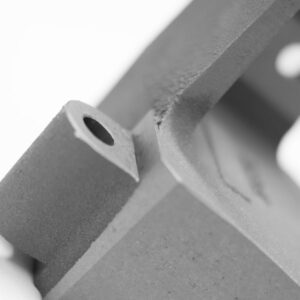Casting Testing and Inspection
Each and every casting must meet exacting specifications in terms of its mechanical properties, dimensional accuracy and tensile strength. At Haworth Castings, we offer UKAS approved independent testing and inspection services to meet the most demanding specifications for sand and gravity die castings.
The nature of the tests and the frequency are generally driven by our customers’ requirements but these are the most common techniques used.
Spectrographic atomic absorption
At the foundry, we conduct chemical analysis to verify the composition of every metal melt before it is poured to ensure that it meets BSI standards. This is vital because the chemical composition of an alloy will have a major effect on its performance.
Non-destructive testing
In addition to testing during the manufacturing phase, non-destructive testing (NDT) is also conducted at the end of the production process.
The two most commonly used NDT tests are:
Radiographic imaging
Radiographic inspection is one of the most effective methods for detecting defects, such as porosity. As part of the radiographic process, X-rays are projected towards the casting. Some of the X-rays are absorbed by the casting while others pass through and are captured by digital or photographic film detectors on the other side. Visual inspection of the resulting images reveals any internal defects or variations in quality.
Penetrant testing
This process can detect tiny cracks, pores or other surface discontinuities on a wide range of ferrous and non-ferrous materials. The castings are dipped into a penetrant testing liquid, which is drawn into any cracks by capillary action. An inspection is then performed under ultraviolet light. This technique is more cost effective than radiographic imaging but it can only detect surface flaws rather than internal porosity or shrinkage.


